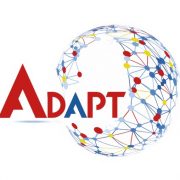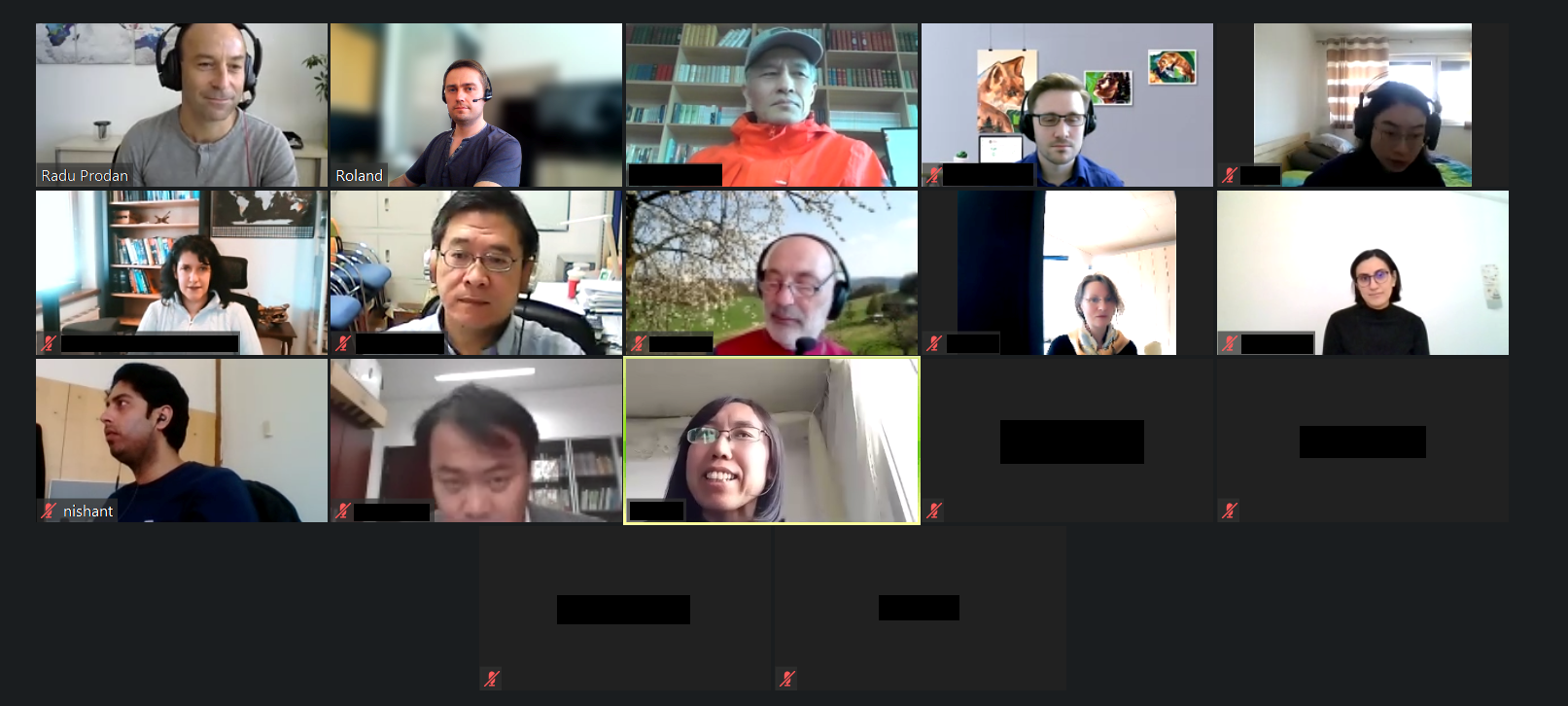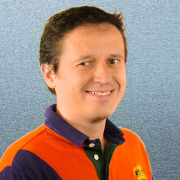Prof. Radu Prodan has been nominated as Management Committee (MC) Member CA19135 at COST (European Cooperation in Science & Technologie).
Conference: 15th International Conference on Research Challenges in Information Science
Title : DataCloud: Enabling the Big Data Pipelines on the Computing Continuum
Authors: Dumitru Roman, Nikolay Nikolov, Brian Elvesæter, Ahmet Soylu, Radu Prodan, Dragi Kimovski, Andrea Marrella, Francesco Leotta, Dario Benvenuti, Mihhail Matskin, Giannis Ledakis, Anthony Simonet-Boulogne, Fernando Perales, Evgeny Kharlamov, Alexandre Ulisses, Arnor Solberg and Raffaele Ceccarelli
Prof. Radu Prodan is a keynote speaker at Memphis DATA 2021, 25th-26th March 2021.
Talk Abstract: We live in a digital world estimated to host around 4 billion Internet users and 10 billion of mobile connections generating 2.5 billion billion of data every day. Managing and extracting value from this sheer amount of raw data requires deep software analysis tools on massive distributed and parallel computing infrastructures aggregating billions of cores and threads. The talk gives an overview of the research activities at the University of Klagenfurt, Austria, on optimising system software support for extreme-scale data processing applications, with focus on scientific simulations, social media and massively multiplayer online games.
Title: WELFake: Word Embedding over Linguistic Features for Fake News Detection
Authors: Pawan Kumar Verma (Lovely Professional University, India | GLA University, India), Prateek Agrawal (University of Klagenfurt, Austria | Lovely Professional University, India), Ivone Amorin (MOG Technologies | University of Porto, Portugal), Radu Prodan (University of Klagenfurt, Austria)
Abstract: Social media is a popular medium for dissemination of real-time news all over the world. Easy and quick information proliferation is one of the reasons for its popularity. An extensive number of users with different age groups, gender and societal beliefs are engaged in social media websites. Despite these favorable aspects, a significant disadvantage comes in the form of fake news, as people usually read and share information without caring about its genuineness. Therefore, it is imperative to research methods for the authentication of news. To address this issue, this paper proposes a two phase benchmark model named WELFake based on word embedding (WE) over linguistic features for fake news detection using machine learning classification. The first phase pre-processes the dataset and validates the veracity of news content by using linguistic features. The second phase merges the linguistic feature sets with WE and applies voting classification. To validate its approach, this paper also carefully designs a novel WELFake dataset with approximately 72,000 articles, which incorporates different datasets to generate an unbiased classification output. Experimental results show that the WELFake model categorises the news in real and fake with a 96.73% which improves the overall accuracy by 1.31% compared to BERT and 4.25% compared to CNN models. Our frequency-based and focused analyzing writing patterns model outperforms predictive-based related works implemented using the Word2vec WE method by up to 1.73%.
Acknowledgement: ARTICONF project
The full paper has been accepted to the main-track of the International Conference on Computational Science (ICCS’21). Conference will be organized in a virtual format on 16-18 June, 2021.
Title: Monte-Carlo Approach to the Computational Capacities Analysis of the Computing Continuum
Authors: Vladislav Kashansky, Gleb Radchenko, Radu Prodan
Abstract: This article proposes an approach to the problem of computational capacities analysis of the computing continuum via theoretical framework of equilibrium phase-transitions and numerical simulations. We introduce the concept of phase transitions in computing continuum and show how this phenomena can be explored in the context of workflow makespan, which we treat as an order parameter. We simulate the behavior of the computational network in the equilibrium regime within the framework of the XY-model defined over complex agent network with Barabasi-Albert topology. More specifically, we define Hamiltonian over complex network topology and sample the resulting spin-orientation distribution with the Metropolis-Hastings technique. The key aspect of the paper is derivation of the bandwidth matrix, as the emergent effect of the “low-level” collective spin interaction. This allows us to study the first order approximation to the makespan of the “high-level” system-wide workflow model in the presence of data-flow anisotropy and phase transitions of the bandwidth matrix controlled by the means of “noise regime” parameter. For this purpose, we have built a simulation engine in Python 3.6. Simulation results confirm existence of the phase transition, revealing complex transformations in the computational abilities of the agents. Notable feature is that bandwidth distribution undergoes a critical transition from single to multi-mode case. Our simulations generally open new perspectives for reproducible comparative performance analysis of the novel and classic scheduling algorithms.
Keywords: Complex Networks, Computing Continuum, Phase Transitions, Computational Model, MCMC, Metropolis-Hastings, XY-model, Equilibrium Model
Acknowledgement: This work has received funding from the EC-funded project H2020 FETHPC ASPIDE (Agreement #801091)
The paper “Multilayer Resource-aware Partitioning for Fog Application Placement” has been accepted for publication at the 5th IEEE international conference on Fog and Edge computing 2021 (ICFEC 2021) , with an acceptance rate of 17% for regular papers.
Authors: Zahra Najafabadi Samani, Nishant Saurabh, Radu Prodan
Abstract: Fog computing emerged as a crucial platform for the deployment of IoT applications. The complexity of such applications requires methods that handle the resource diversity and network structure of Fog devices, while maximizing the service placement and reducing resource wastage. Prior studies in this domain primarily focused on optimizing application-specific requirements and fail to address the network topology combined with the different types of resources encountered in Fog devices. To overcome these problems, we propose a multilayer resource-aware partitioning method to minimize the resource wastage and maximize the service placement and deadline satisfaction rates in a Fog infrastructure with high multi-user application placement requests. Our method represents the heterogeneous Fog resources as a multilayered network graph and partitions them based on network topology and resource features. Afterward, it identifies the appropriate device partitions for placing an application according to its requirements, which need to overlap in the same network topology partition. Simulation results show that our multilayer resource-aware partitioning method is able to place twice as many services, satisfy deadlines for three times as many application requests, and reduce the resource wastage up to 15-32 times compared to two availability and resource-aware state-of-the-art methods.
Christian Timmerer, Associate Professor at the Institute of Information Technology (ITEC) and Director of the ATHENA Christian Doppler Laboratory, has been appointed IEEE Communications Society Distinguished Lecturer for the term 2021-2022.
“The Distinguished Lecturer Program (DLP) connects Senior IEEE ComSoc members, who are renowned communications technology experts, with ComSoc chapters so they can share their knowledge, expertise, and insights into the future of communications technology.”
In the context of the Distinguished Lecturer Program (DLP), Christian Timmerer will offer the following (virtual) lecture topics:
- HTTP Adaptive Streaming (HAS) — Quo Vadis?
- Quality of Experience (QoE) for Traditional and Immersive Media Services
- Immersive Media Services: from Encoding to Consumption
- 20 Years of Streaming in 20 Minutes
- Multimedia Communication, Networking, Protocols, Delivery
- Multimedia Standards (MPEG, IETF, W3C)
The details of how to request a Distinguished Lecturer can be found here.
Authors: Alireza Erfanian (Alpen-Adria-Universität Klagenfurt), Farzad Tashtarian (Alpen-Adria-Universität Klagenfurt), Anatoliy Zabrovskiy (Alpen-Adria-Universität Klagenfurt), Christian Timmerer (Alpen-Adria-Universität Klagenfurt, Bitmovin), Hermann Hellwagner (Alpen-Adria-Universität Klagenfurt)
Abstract: Live video streaming traffic and related applications have experienced significant growth in recent years. However, this has been accompanied by some challenging issues, especially in terms of resource utilization. Although IP multicasting can be recognized as an efficient mechanism to cope with these challenges, it suffers from many problems. Applying software-defined networking (SDN) and network function virtualization (NFV) technologies enable researchers to cope with IP multicasting issues in novel ways. In this paper, by leveraging the SDN concept, we introduce OSCAR (Optimizing reSourCe utilizAtion in live video stReaming) as a new cost-aware video streaming approach to provide advanced video coding (AVC)-based live streaming services in the network. In this paper, we use two types of virtualized network functions (VNFs): virtual reverse proxy (VRP) and virtual transcoder function (VTF). At the edge of the network, VRPs are responsible for collecting clients’ requests and sending them to an SDN controller. Then, by executing a mixed-integer linear program (MILP), the SDN controller determines a group of optimal multicast trees for streaming the requested videos from an appropriate origin server to the VRPs. Moreover, to elevate the efficiency of resource allocation and meet the given end-to-end latency threshold, OSCAR delivers only the highest requested quality from the origin server to an optimal group of VTFs over a multicast tree. The selected VTFs then transcode the received video segments and transmit them to the requesting VRPs in a multicast fashion. To mitigate the time complexity of the proposed MILP model, we present a simple and efficient heuristic algorithm that determines a near-optimal solution in polynomial time. Using the MiniNet emulator, we evaluate the performance of OSCAR in various scenarios. The results show that OSCAR surpasses other SVC- and AVC-based multicast and unicast approaches in terms of cost and resource utilization.
Link: IEEE Transactions on Network and Service Management (TNSM)
Keywords: Dynamic Adaptive Streaming over HTTP (DASH), Live Video Streaming, Software Defined Networking (SDN), Video Transcoding, Network Function Virtualization (NFV).
Authors: Bernhard Rinner, Christian Bettstetter, Hermann Hellwagner, and Stephan Weiss
Abstract: Drones have evolved from bulky research platforms to everyday objects that enable a variety of innovative applications. One of the current challenges is to unite individual drones into an integrated autonomous system. They should operate as a networked team to provide novel functionality that multiple individual drones can never achieve. This article addresses the building blocks of such multidrone systems: wireless connectivity, communication, and coordination. We discuss implementation aspects in three experimental case studies, compare our techniques for improving resource efficiency, and present some “lessons learned” from our research experience in this area. 









